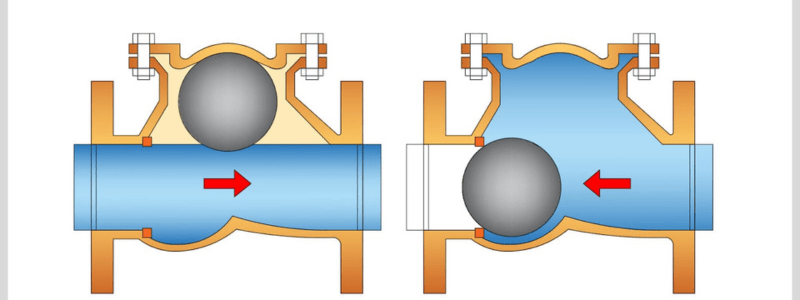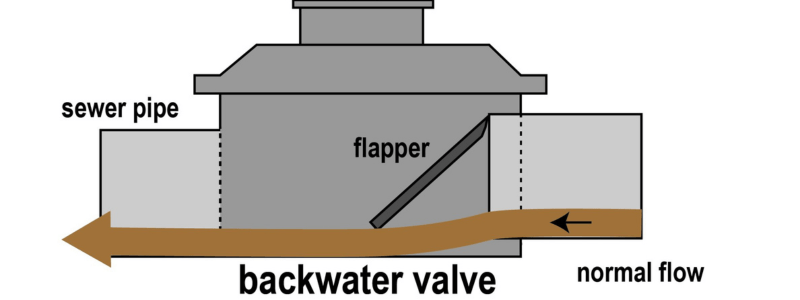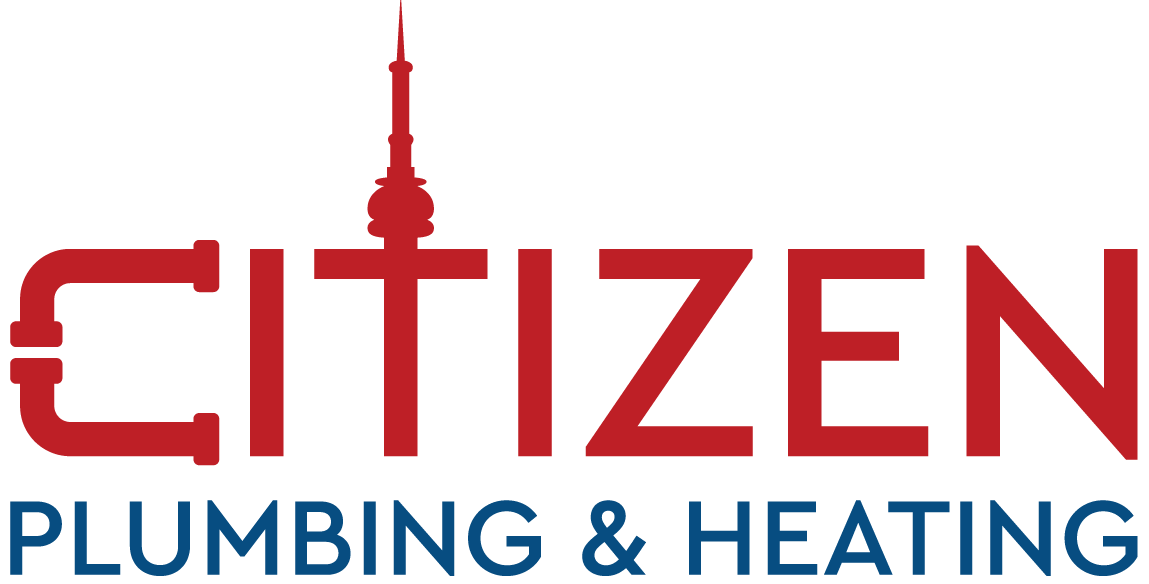Have you ever faced sewage leakage in your home? If so, you know how daunting it is to deal with a flooded basement. It comes with extensive damage and costly repairs. According to the Insurance Bureau of Canada (IBC), A flooded basement can cost an average of $43,000 to repair in Toronto.
So, what’s the solution to this? The answer is backwater valve installation. This can save you from the headache and expense of dealing with sewage backups and make sure this doesn’t happen again.
In this blog, you will know what exactly backwater valve installation is, their types, and why installing one in your home is essential. We will also cover how a professional plumbing service provides backwater valve installation and how you can maintain it for longevity.
Lastly, you’ll also know how much backwater valve installation costs here in Toronto and how you can save through by subsidy provided by the Toronto government.
What Is Backwater Valve?
A backwater valve (also known as a backflow or sewer backup valve) is a valve in your sewer line that allows water or sewage to go in one direction out of your house. Heavy rains can overload city sewer systems, causing water or sewage to overflow your home. During such circumstances, a backwater valve stops sewage from running back into your home.
A backwater valve is usually situated in the basement and has an easily removable cover for maintenance. Fortunately, if you already have a sump pump, the backwater valve should be close at hand. When a backwater valve is correctly placed, you can be certain that your property is always safeguarded.
How Does It Work?
A backwater valve consists of two fundamental components: a protective flap and a cleanout. The protective flaps’ purpose is to allow water to flow out of your property, preventing municipal sewage from going back through your pipes and into your home.
The cleanout provides access to the line, allowing for visual inspection of the valve as well as cleaning and maintenance of the flap and pipes.

Under typical conditions, water and sewage will travel through the backwater valve with the protective flap closed. When the city sewer drain backs up, the water will push back through your pipes and try to pass through your backwater valve.
Types of Backwater Valve
There are commonly three types of backwater valves that are used in houses.
Check Valve
A check valve is the most cost-effective solution when looking for an affordable option for backwater valve installation. If there is an overflow, it features a flap or ball that will close and prevent the water flow to your property.
The disadvantage of these valves is that they require the most frequent maintenance.
Gate Valve
Gate Valves are more reliable but require someone to close and open the sewer lines if there’s a blockage, as they have an automatic system. They are more expensive than check valves.
Combination Valve
The Combination Valve is fitted with an air-filled chamber and gate. The gate closes when a backup is detected. This design is the most costly, but it also has an alert that indicates whether or not the sewage line is blocked. So you can be alerted about any blockage.
Unfortunately, not all backwater valves are well-constructed. Some lower-quality valves can cause more problems than they prevent. The Insurance Bureau of Canada warns against using a plug because it might cause pressure to build up while keeping sewage water out. This can result in structural damage to your property and costly repair bills, which no homeowner or property manager wants to deal with.
You can take the help of professional backwater valve services to install a well-built valve according to your home’s plumbing structure.
Importance of Backwater Valve Installation
Our home consists of a sewer line that carries out your house’s wastewater. You need to install the backwater valve in the sewer line to avoid the variety of things that can create a sewage blockage.
A blocked pipe, tree roots, and other factors might cause the flow to your bathroom or kitchen to cease. The main advantage of installing a backwater valve in your house or structure is that it can assist in avoiding floods. The peace of mind that comes with knowing your home is protected might make it worthwhile to install one.
Depending on where you live in Canada, your municipality may provide a subsidy to assist in paying for installing a backwater valve. Here in Toronto, the city website Toronto.ca says to offer a subsidy of up to 80% of the invoiced cost, up to a maximum of $1,250, to help offset the cost of installing a backwater valve.
It is also advisable to check with your insurance carrier since some provide incentives to homeowners and commercial property managers who install a backwater valve.
A backwater valve can save you the trouble and expense of flooding your home or building. Flooding not only poses a health risk to persons on the property, but it may also cause damage to your house or building’s flooring, walls, and furniture.

Moreover, you can reduce the chances of losing important things like valuables, mementos, or important files and documents. A backwater valve is your best defense against this scenario.
A backwater valve reduces the likelihood of plumbing backups, so anything you store in your basement will stay safe, dry, and sewage-free. According to the FoodHelpNY, a backwater valve can save you $2000-$10,000 in sewage cleanup and restoration costs.
It is important to note that backwater valves are not a DIY project. The complexity of installing a backwater valve is best left to the professionals.
You can contact Citizen Plumbing if you are looking for a professional backwater valve installation service here in Toronto.
Professional Backwater Valve Installation Process
Taking Permit
Depending on where you live, you may need to take a permit before starting the backwater valve installation. Here in Toronto, you need a permit to operate backwater valve installation in your apartment. Some professional backwater valve installation services offer help in this process.
Locating The Drain Line
Professionals start by inspecting your home’s drain system and then detecting the drain line causing the leakage. This step is important to be handled by experts. You may need to bear the extra construction cost if not done right.

Breaking Concrete And Excavation
Your main house drain is then exposed using shovels and picks, and the top layer of your basement’s concrete floor is broken with a jackhammer. Your main drain is usually located 2 feet from your concrete floor; a 2 ft. X 2 ft. wide hole will be required to complete this task. Professional backwater valve installation services will also help construction by removing dirt and rubble.
Existing Drain Line Removal
Some of your current drain lines will be removed to make room for the installation of your backwater valve and house trap. Depending on the age of your property, your main drain line might be composed of red clay or PVC piping. If your drain line is built of red clay, a rubber transition piece will be placed on both ends before installing the new PVC pipe.
Backwater Valve and P-Trap Installation
Then comes the real part, The installation of the backwater valve itself. You can choose to install whatever type is best suited for your house. Professional backwater valve installation services can ensure the perfect installation in the minimum time.
Testing
After installing the valve, a drain line test is conducted before re-pouring concrete. This will ensure that the valve is installed properly and you are facing no issues afterward.
The test is done by utilizing a strong pressure washer to cleanse the system and confirm that your drain line is not clogged at any stage.
Restored to Previous State
Backwater valve installation professionals will restore everything to what it was before. After the installation, the plumber will backfill the area around the main sewer line and ensure that any disturbed landscaping or pavement is restored to its original condition. They may also repair any damage to the plumbing system caused by the installation.
Backwater Valve Maintenance
Inspection
You should inspect the valve at least once a year for debris that might block it and ensure that all moving parts can freely move. Most valves have a detachable cover for easier cleaning. Still, you need to be cautious.
Some experts recommend running hot soapy water down the sink first for a more thorough clean. Wear rubber gloves and a long-handled brush when scrubbing around and under the flap. Most manufacturers include suggestions for backwater valve maintenance.
Checking The O-Ring
The O-ring surrounding the lid should also be examined to ensure it is in optimal condition. If it is not, you might need to replace it. Check the condition of the floats on either side of the flap and replace them as needed. They will no longer float and will not lift the flap as needed as soon as they are used.
Don’t Flush Things You’re Not Supposed To
You shouldn’t be flushing anything down the sewer line. Avoid flushing or diluting products such as ‘flushable wipes’ or diaper liners to keep the flow going smoothly. When these items are disposed of in the garbage rather than the toilet, your toilet system will not have to work as hard and will be less likely to become blocked.
Another detrimental product you can flush is oil or oil-based products. Flushing oils down the drain can clog the drains, which causes overflow.
Have Professional Inspection
If you are unclear about the state of the valve or do not feel comfortable working on it yourself, you may get it inspected by a professional plumber.
Cost of Backwater Valve Installation
So, now we reach the question, ‘How much does a backwater valve installation cost?’ The answer will vary depending on the specific circumstance. For modest homes, installing a sewer backflow valve may cost a few hundred dollars.
On bigger projects, installing a few valves might be more expensive. Subsidies from the local government will also impact the overall backwater valve installation cost. The type of plumbing gadget you require and your property’s design may also affect costs.
According to the Linquip, a backwater valve installation costs, on average, $300–$400. On average, low-level backflow preventers cost between $130 and $200, whereas high-level preventers range in price from $800 to $1,000.
Conclusion
In conclusion, you don’t want to deal with sewage backup which can damage your valuable belongings and cost a lot of expensive repairs. However, backwater valve installation can save you from this headache and expense. It stops sewage from returning to your home during heavy rains that can overload city sewer systems.
The main advantage of backwater valve installation is that it reduces the likelihood of plumbing backups, so anything you store in your basement will stay safe, dry, and sewage-free. A backwater valve can save you the trouble of flooding in your home, which not only poses a health risk to persons on the property but may also cause damage to your house or building’s flooring, walls, and furniture.
It is also worth noting that depending on where you live in Canada, your municipality may provide a subsidy to help offset the cost of installing a backwater valve. Additionally, some insurance carriers incentivize homeowners and commercial property managers who install a backwater valve.
In conclusion, a backwater valve is essential for any homeowner or property add-on who wants to protect their property from sewage backups and flooding. While it is not a DIY project, installing a backwater valve is best left to the professionals. So, take the help of professional backwater valve services to install a backwater valve in your home and enjoy the peace of mind that comes with knowing your property is secured.






 by
by